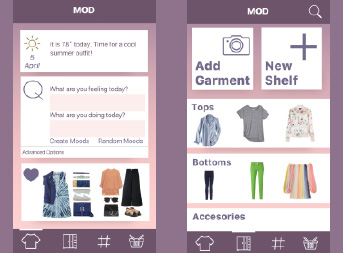
The challenge of building good outfits out of the individual garments in a wardrobe may leave consumers with seemingly too few options despite the numerous pieces and combinations in their wardrobes.
READ MORE
A system that could identify good options for a user's physical attributes and preferences from all the outfit permutations possible in their wardrobe would alleviate the cognitive bottleneck of deciding what to wear, while also helping to reduce consumption by providing consumers with “new” outfits built from pre-existing garments. To do this, we must first articulate the relationship between garments and bodies and successful outfits. This research explores the question of how to describe, model, and predict the body- garment- and outfit-level attributes that contribute to user satisfaction with an outfit.
Funded by UMN Informatics Institute and National Science Foundation (grant CHS-1715200)
Related Publications
- Dunne, L. E. (2015). Technology and Sustainable Futures. In Sustainable Fashion: What's Next? A Conversation about Issues, Practices and Possibilities (2nd ed.). New York, NY: Fairchild Books.
- Dunne, L. E., Zhang, J., & Terveen, L. (2012, September). An investigation of contents and use of the home wardrobe. In Proceedings of the 2012 ACM Conference on Ubiquitous Computing (pp. 203-206). ACM.





